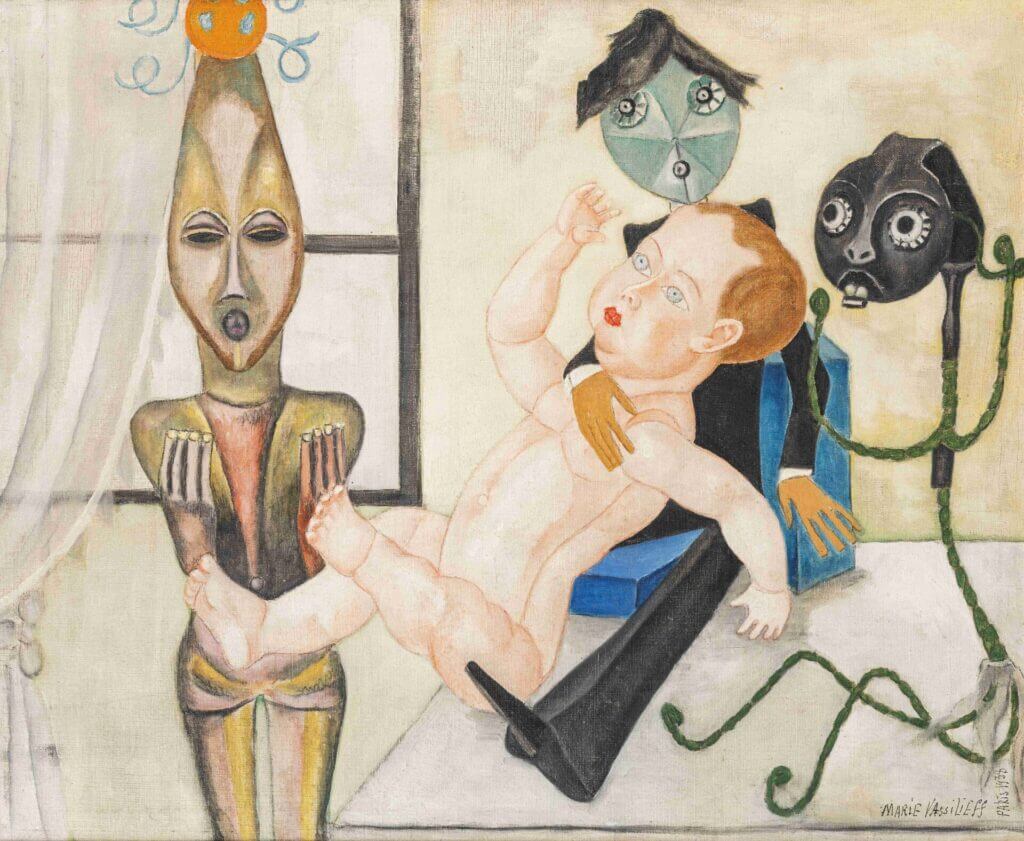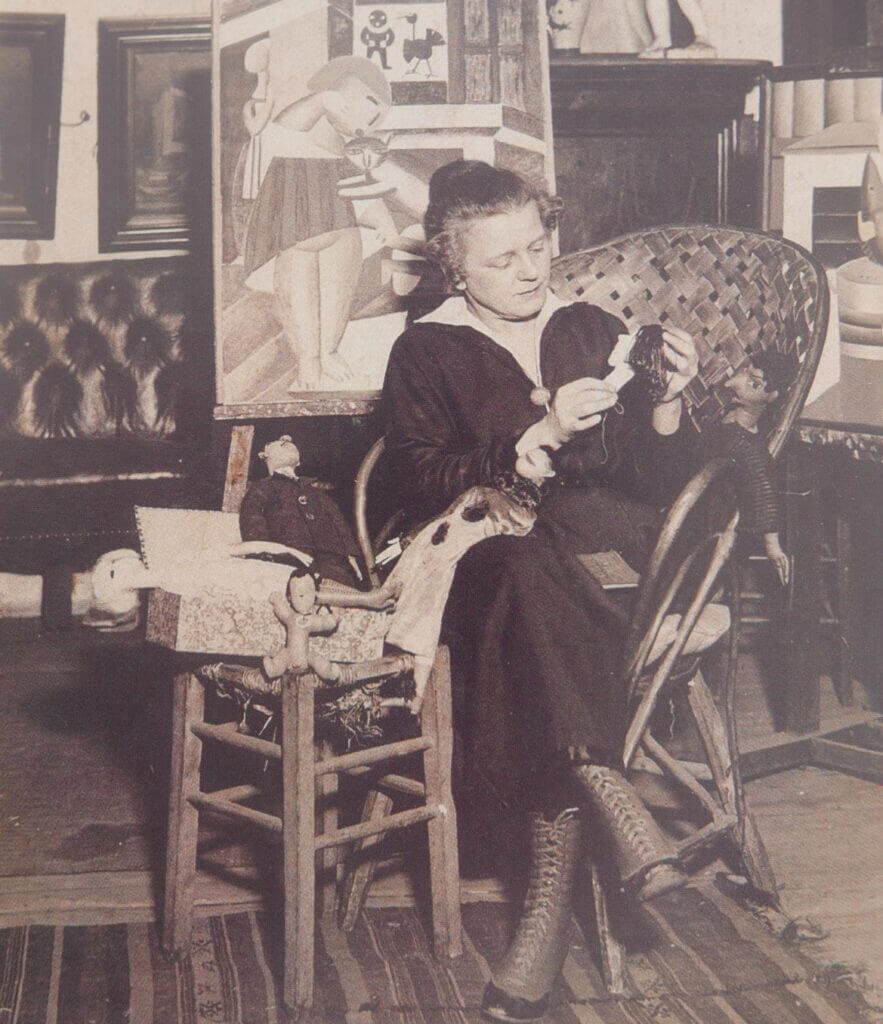Your currently viewing RAW Modern | Switch to RAW Contemporary
Poupées, 1938
Catalogue essay by Blanche Llewellyn
A prominent figure of the Montmartre avant-garde scene in the early 20th century, Marie Vassilieff captivated her contemporaries by challenging conventions and questioning the boundaries between craftsmanship and art.
She encountered Henri Matisse at the Salon d’Automne, establishing a link that led her to study under him until 1910.
That same year, she began exhibiting at the Salon des Indépendants and the Salon d’Automne, and established her own Russian Academy of Painting and Sculpture, which was renamed the following year “the Marie Vassilieff Academy”. In 1914, with the outbreak of war, Vassilieff closed her academy and transformed it into a canteen that attracted numerous artists and personalities such as Apollinaire, Picasso, Braque, Soutine, Modigliani, Zadkine, Foujita, Utrillo, and Chagall.
At the same time, Vassilieff began creating her first “Portrait Dolls” and exhibiting them, notably one representing Pablo Picasso which was displayed in Paul Poiret’s mansion in 1916. Inspired by Russian folk tradition, the creation of these dolls became integral to her entire oeuvre.
This painting – “Poupées” – is composed of three anthropomorphic figures: a statue inspired by primitive art, a wire sculpture, and a puppet with his hands on a baby doll, whose features closely resonate with a canvas painted a few years earlier in 1921, titled “At the Rotonde.” This imaginary world of dolls and masks permeated both the artist’s paintings and her living space.
This same year, in 1938, André Breton created “Composition of Funereal Derision in Polychrome Wire,” following his journey to Mexico where he discovered a new world that captivated him through its traditional art marked by objects which he called the “splendid funeral toys.” – showcasing alongside Vasilieff a clear mutual fascination and interest in popular arts within the Surrealist movement.
This adoption of the surrealist fantasy was mostly cherished by Vasillieff though the theme of childhood – for surrealists, childhood often resonated within a time frame of little anguish which “the father of surrealism”, André Breton, saw as a jovial and naive period: “Children set off each day without a worry in the world”.

